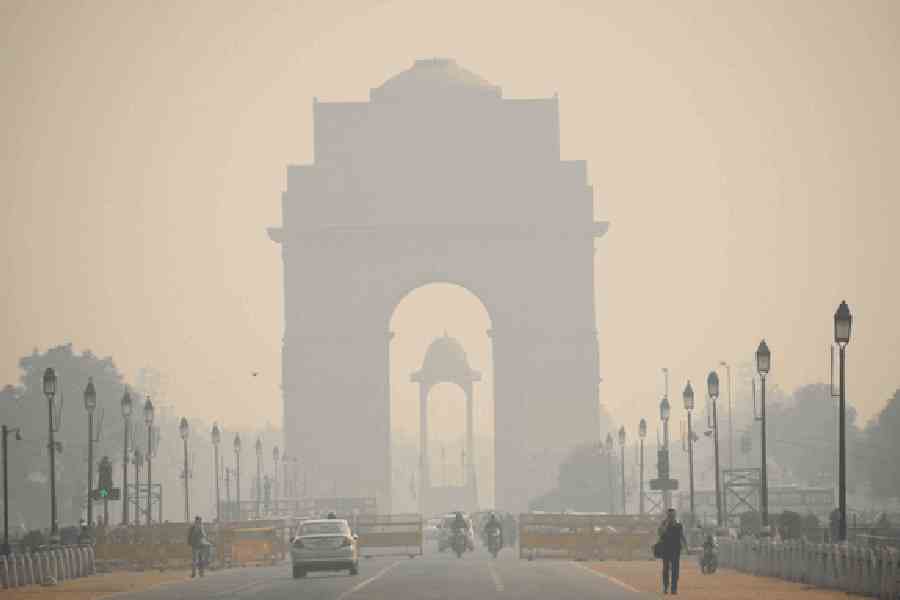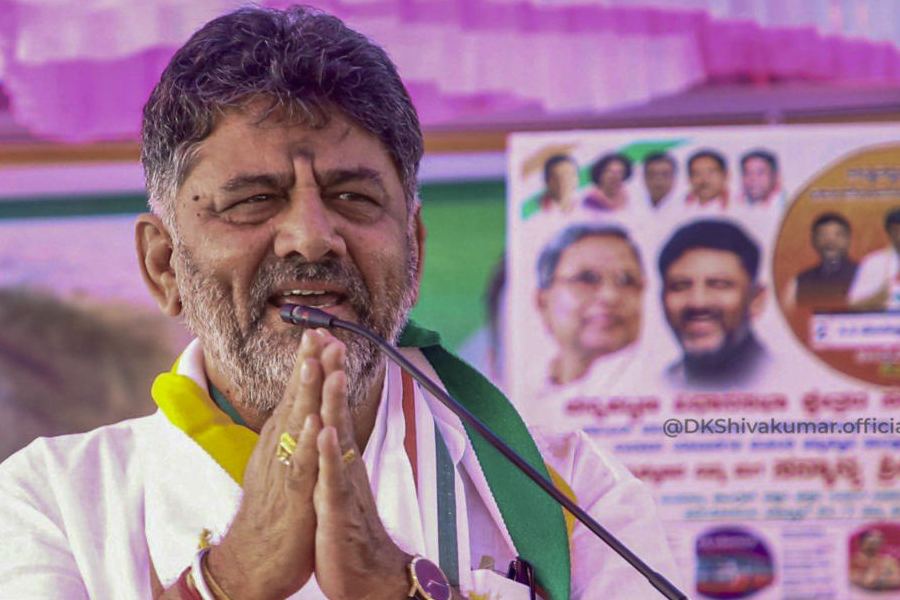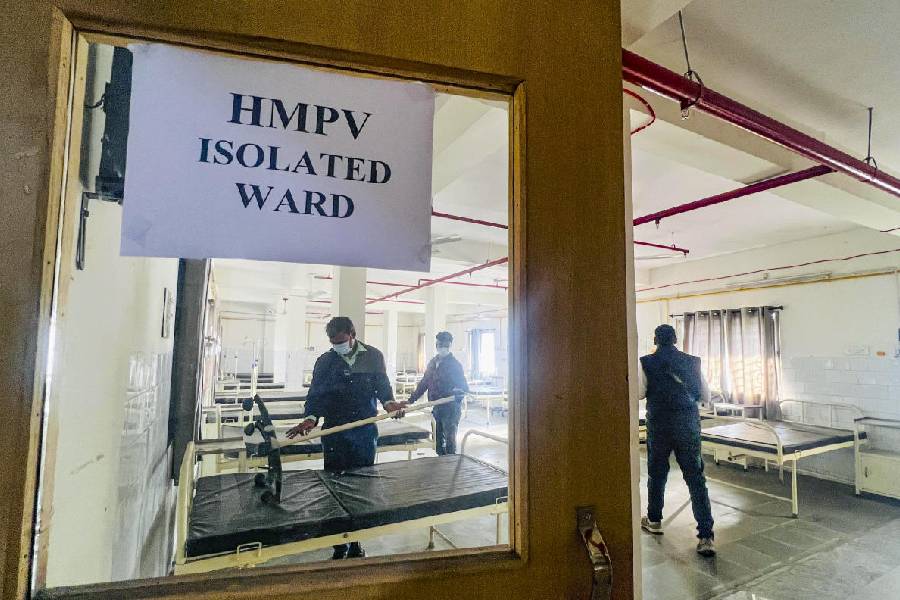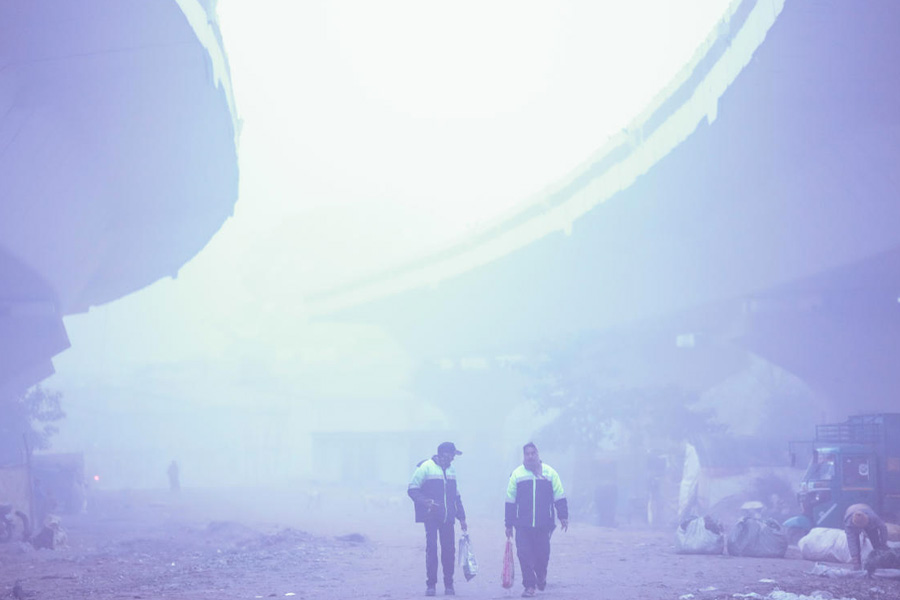The government has identified eight more pollution hotspots in addition to the existing 13 in the national capital, and special teams will be deployed there to check pollution sources, Delhi Environment Minister Gopal Rai said on Monday.
After a meeting with 28 departments to ensure the effective implementation of pollution mitigation measures in the capital, Rai said the government has also decided to use suppressant powder to prevent dust pollution in the city.
Delhi's air quality turned "very poor" on Sunday for the first time since May, mainly due to a drop in temperature and wind speed, which allowed pollutants to accumulate.
"In addition to the 13 existing air pollution hotspots in Delhi, we are focusing on eight places where the AQI has exceeded the 300-mark. These locations include Shadipur, ITO, Mandir Marg, Nehru Nagar, Patparganj, Sonia Vihar, Dhyan Chand Stadium, and Moti Bagh," the minister told a press conference.
He added that special teams will be deployed at the eight places to identify pollution sources and take corrective measures in collaboration with the Delhi Pollution Control Committee.
Rai also mentioned that district collectors have been instructed to conduct field visits on October 25 and ensure the strict implementation of pollution mitigation measures.
"Directions have also been issued to use dust suppressant powder in anti-smog guns to prevent dust pollution. The anti-dust campaign will be strengthened, and more field visits will be conducted," he said.
Action will be taken against diesel generator sets, Rai said, adding DG sets being used for emergency services are exempt.
The minister said directions have been issued to the Delhi Traffic Police to decongest 95 identified traffic junctions which will help reduce vehicular pollution.
He said the Delhi Metro Rail Corporation and the Delhi Transport Corporation have been instructed to increase the frequency of their services.
The Delhi government will also run additional buses in the capital under the "Paryavaran Bus Sewa" campaign to bolster public transport in a bid to reduce vehicular emissions, the minister said.
Rai expressed concern that several department heads and senior officials seem unaware of the deteriorating air quality and the measures their departments are implementing to combat pollution.
He urged the chief secretary to ensure these officials work diligently for the next month when air pollution is expected to peak.
Officials from the India Meteorological Department stated that the air quality in Delhi-NCR will remain "very poor" for the next few days due to a drop in temperature and the influx of emissions from stubble burning.
The wind speed is slow, and there has been scant rainfall in October, unlike the last two years, an official said.
The central government's Decision Support System for Air Quality Management predicts that paddy straw burning may increase from Monday.
According to the system, smoke from paddy straw burning accounted for 16 per cent of Delhi's PM2.5 pollution on Sunday, and this could increase to 30 to 32 per cent on Monday.
According to the Union environment ministry, the maximum share of farm fires in Delhi's PM2.5 pollution stood at 34 per cent on November 3 last year and 48 per cent on November 7 in 2021.
The Commission for Air Quality Management (CAQM), a statutory body responsible for proactively implementing the pollution control plan known as the Graded Response Action Plan (GRAP), on Saturday directed authorities in the NCR to increase parking fees to discourage private transport and enhance the services of CNG or electric buses and metro trains amid a likely increase in pollution levels.
GRAP categorises actions into four stages: Stage I 'Poor' (AQI 201-300); Stage II 'Very Poor' (AQI 301-400); Stage III 'Severe' (AQI 401-450); and Stage IV 'Severe Plus' (AQI >450).
Stage I mandates the suspension of work at private construction and demolition projects with a plot size equal to or exceeding 500 square metres that are not registered on the state government's portal for remote monitoring of dust mitigation measures.
Authorities are also tasked with enforcing a complete ban on the use of coal and firewood in 'tandoors' at hotels, restaurants, and open eateries, along with taking punitive action against polluting industrial units and thermal power plants within 300 km of Delhi.
Ensuring the proper implementation of guidelines for dust mitigation at construction and demolition project sites and sound environmental management of resulting waste is also part of Stage I.
Stage II measures involve increasing parking fees to discourage private transport and enhancing CNG or electric bus and metro services by introducing additional fleets and increasing service frequency.
Under Stage III, BS-III petrol and BS-IV diesel four-wheelers are prohibited from operating in Delhi, Gurugram, Faridabad, Ghaziabad, and Gautam Buddh Nagar.
Stage III involves a complete halt on construction and demolition work, except for essential government projects, besides mining and stone crushing. It also includes a ban on the entry of light commercial vehicles registered outside Delhi and diesel-guzzling trucks, and medium and heavy goods vehicles (except those involved in essential services).
Stage IV includes banning all types of construction and demolition work. State governments are authorised to decide on online classes for school students and work-from-home arrangements for government and private offices during such situations.
Except for the headline, this story has not been edited by The Telegraph Online staff and has been published from a syndicated feed.











